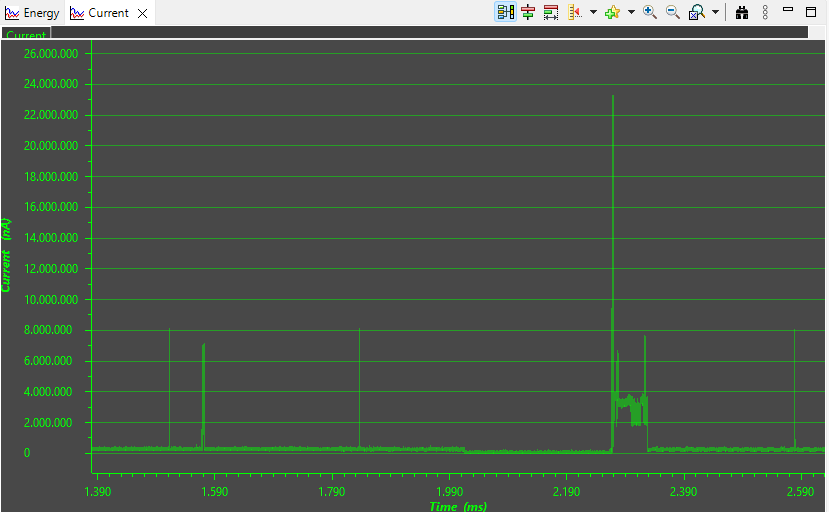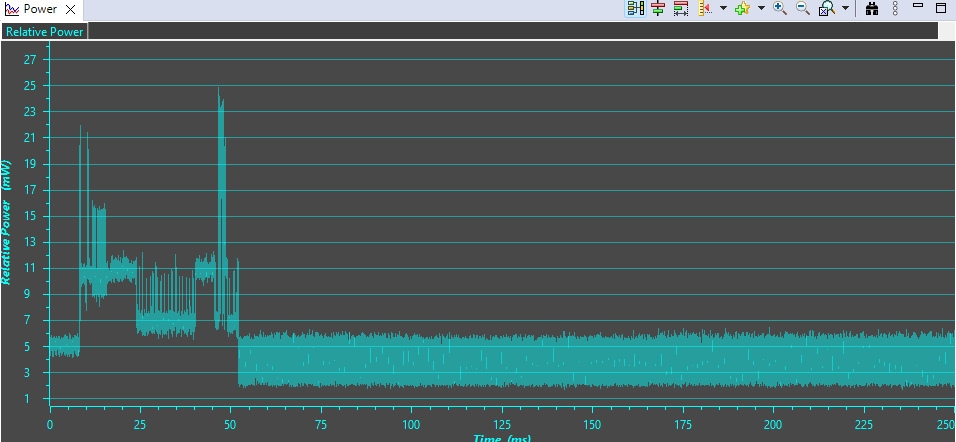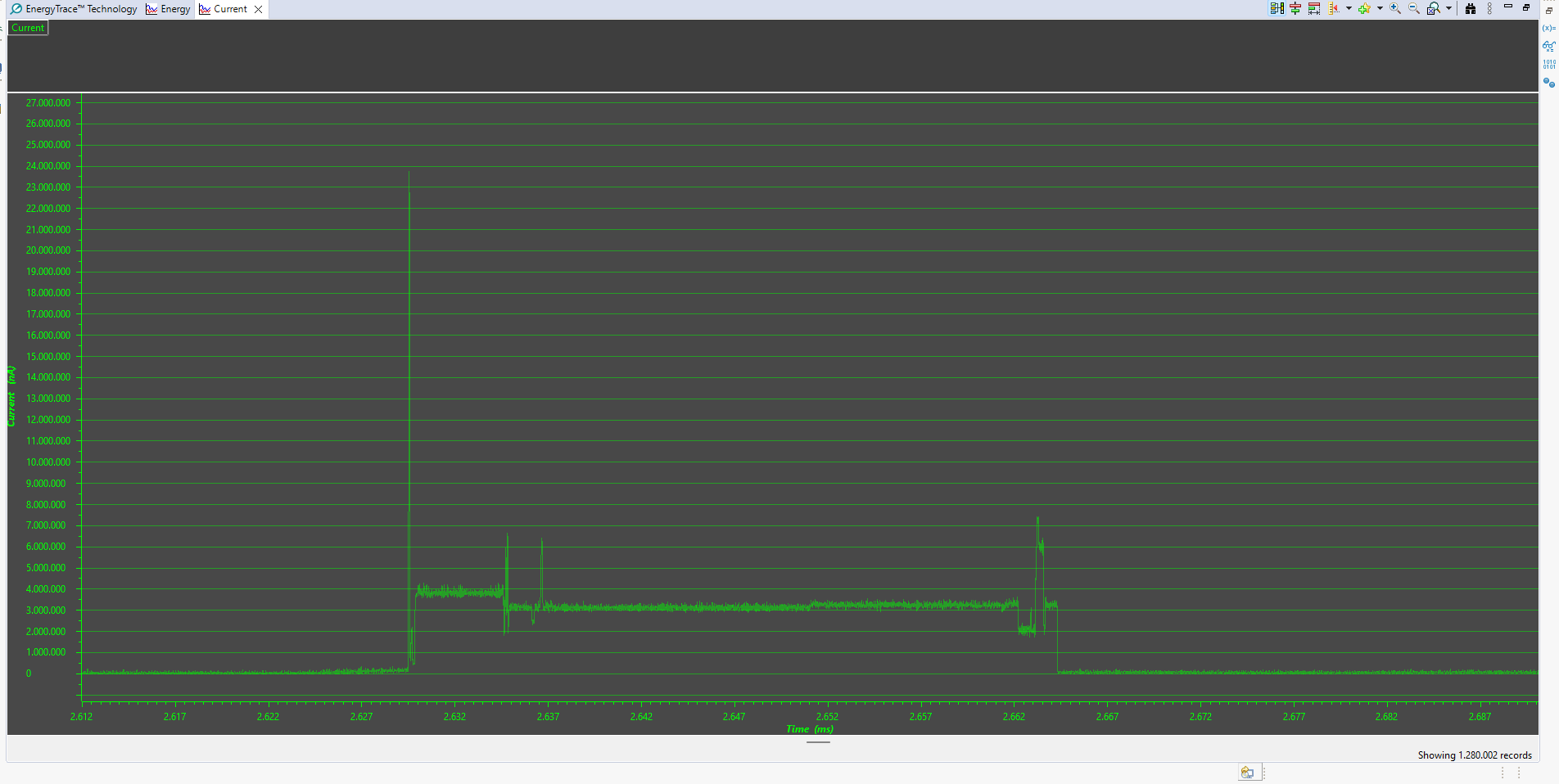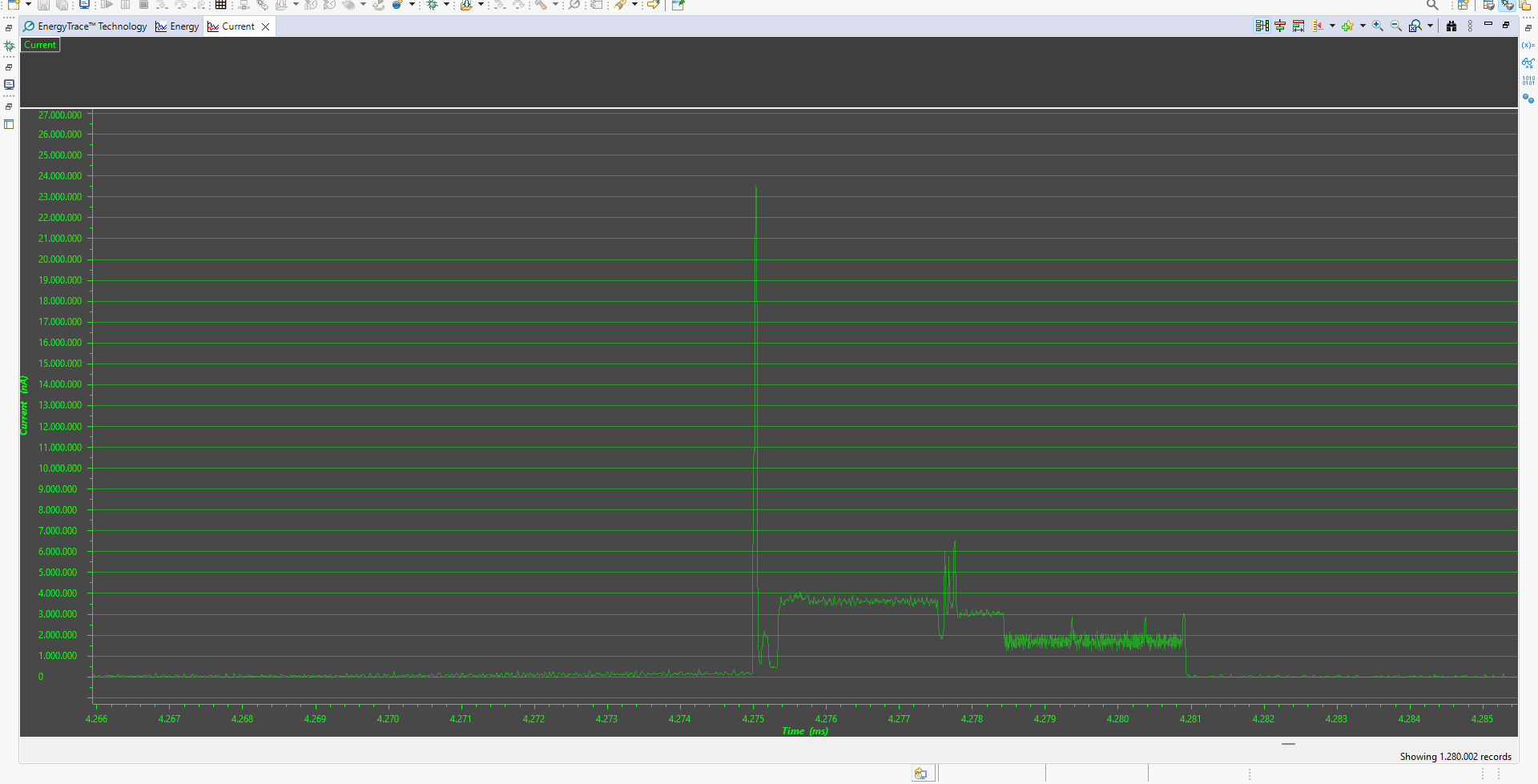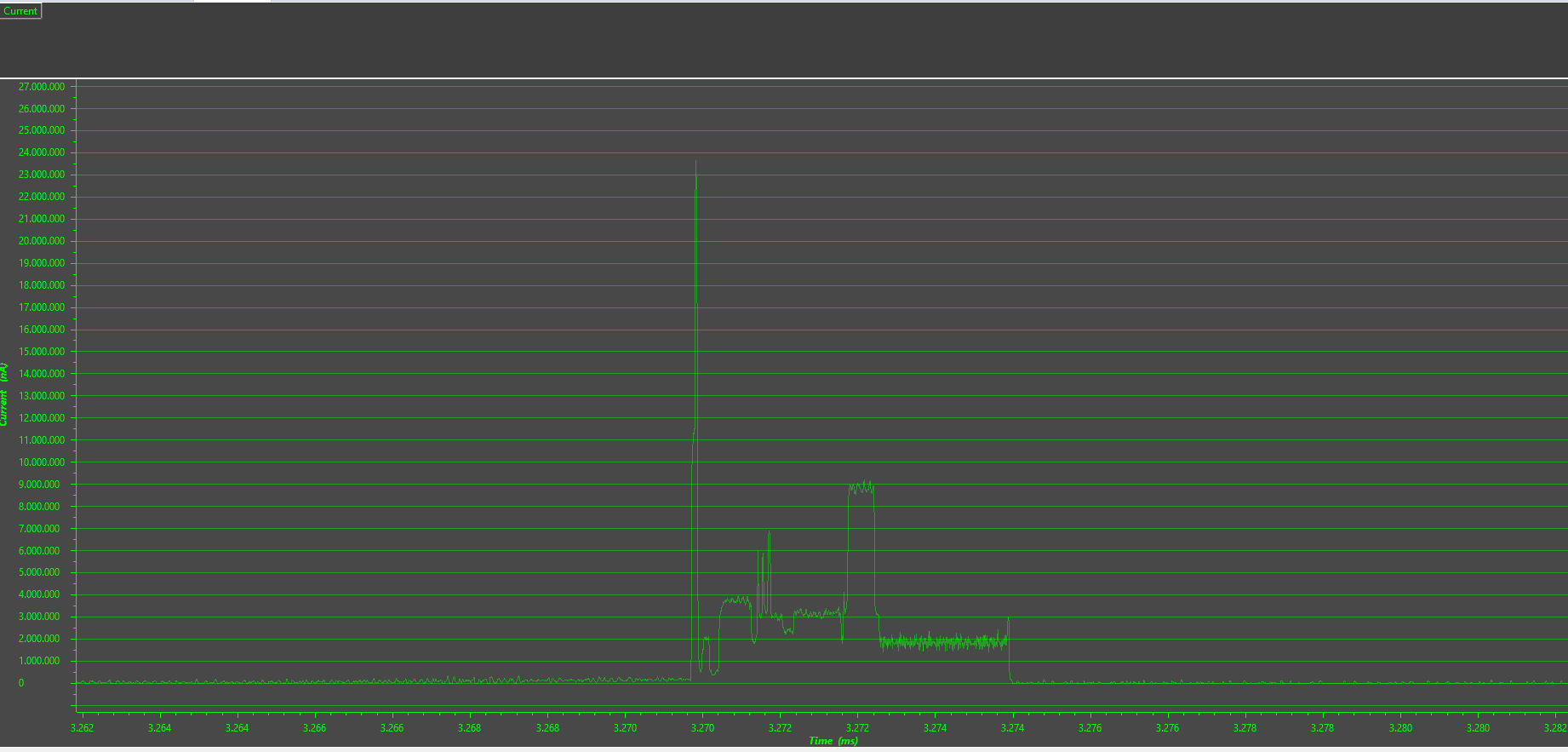Other Parts Discussed in Thread: ENERGYTRACE, CC2340R5
Tool/software:
Hi,
When powering the launchpad, at the beggining, I have seen that there is a high consumption during about 60 ms and it is about 10-12 mA. Why does it happen? It could be possible to minimize this time in which, I guess, the microcontroller is initializing?
Thank you in advance.
Greetings,


